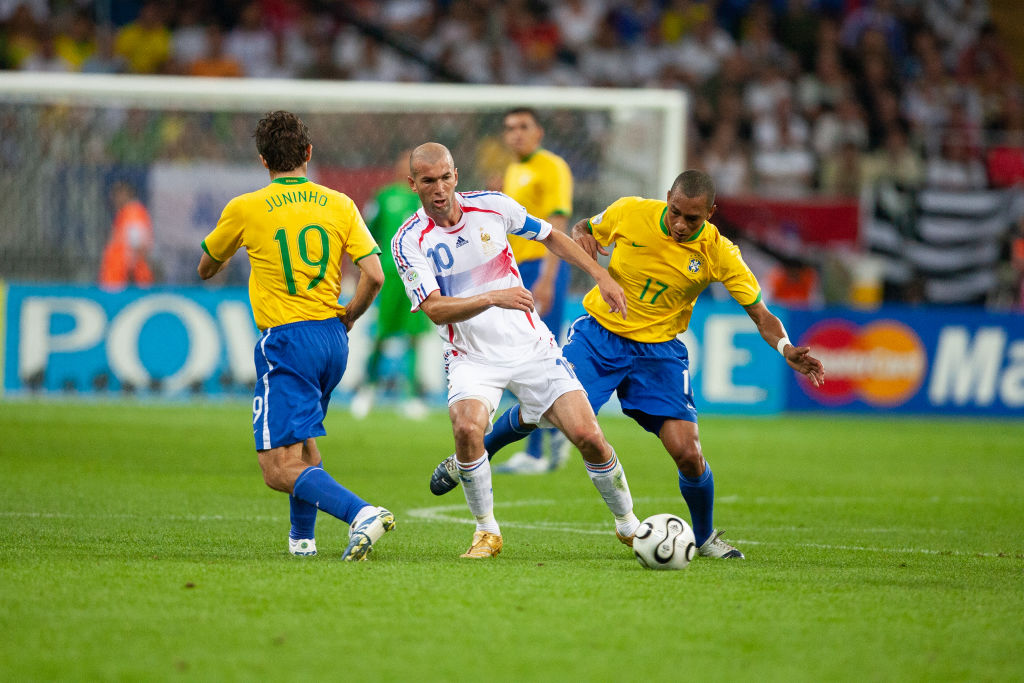
The playmaker. In the same way every first-class orchestra needs a conductor, every great possession-based football team needs them.
Both roles cannot be entirely taught. They require a certain touch, feel and vision that goes way beyond training manuals. The sort of job that AI will never replace. But what in the modern game is the playmaker’s job, and who are the current maestros of the profession?
FourFourTwo's experts are on hand to dissect this football term. Here’s your tactical explainer.
What is a playmaker?
The playmaker is often shorthand for the no.10. But that's not entirely accurate. The no.10 doesn't have to be a playmaker – though it usually is.
And more to the point, the playmaker can play… anywhere. Kevin De Bruyne is a playmaker from the no.8 position. Andrea Pirlo is a playmaker from the no.6 position as a regista.
In the clip above, the highlighted player is a deep-lying playmaker who sees a lot of the ball, dictates the tempo and ends up making the decisive pass to play in the ball for the assister in this move.
The playmaker looks to control the flow of their team’s play when in possession. High-level vision and perfect passing are vital. Most can be split into two roles: an advanced playmaker – often playing in the no.8, no.10 or trequartista roles – or alternatively, a deep-lying playmaker, who you may find as a no.6 or regista (or in the case of Trent Alexander-Arnold or Oleksandr Zinchenko, an inverted full-back).
The latter will aim to build from deep midfield, keeping possession but also switching the play when required. When we think of decision-making in football, our attention often turns to the final third – whether to pass or shoot. But decision-making is hugely important to every playmaker. Not just when to pass the ball, but who to pass to. This is why ‘scanning’ the play is essential.
Within a split second playmakers often have to analyse five or six teammates’ positions on the pitch, the space they have, what weight of pass they might require. Not an easy task: and to do that at the highest level and make the right decision, requires serious skill.
Who are the great playmakers?

Although he was recognised in another position as a sweeper, Franz Beckenbauer – ranked at no.8 in FourFourTwo's list of the greatest players of all time – was one of the first great playmakers.
His passing range and football IQ were virtually unmatched in the late sixties and early seventies. Der Kaiser could ‘run’ a game in the same way that a Zico or a Pirlo would in the generations that followed. These players could pass with such authority, that they would naturally help control possession and transition up the pitch.
The best playmakers on Earth have ‘la pausa’ (the pause). Associated mostly with Barcelona midfielders, pausa is the ability to, almost literally, pause the game, sometimes stop with the ball to a standstill and assess what's going around you before making your next move. While Xavi and Iniesta were the masters of this, it's a trait of confidence and high decision-making that can still be seen in the Premier League today with the likes of Cole Palmer and Bukayo Saka.
But as the years progressed playmaking has evolved, with dribbling now as important as passing. Elegant Frenchman Zinedine Zidane was one of the finest examples, driving through teams and exploiting space with his touch and power. He wasn’t exactly a bad passer, but Zidane was able to make the play by running through midfield, attacking the space and overloading with his power.
Something of a hybrid of advanced and deep-lying playmaker Luka Modric is perhaps the greatest creator of the modern era. Although Modric can play a pinpoint long switch of play when required, his game is more about opening up angles.
The Croatian knows exactly how to entice a press from the opposition and how that can open up space for another teammate. Watch any game he's ever played in and track Modric for five or ten minutes in the game. He's a modern-day master of the role.
What are the pros and cons of using playmakers?

Football is all about balance. The playmaker has no weakness in itself but where you sacrifice some grit for some technicality.
Since the playmaker is often the most mercurial talent on the pitch: it's rare that he can handle himself defensively, too.
Mesut Ozil was criticised in English football for being a luxury player. The German's talents weren't in a cover shadow or gegenpressing – but that's the trade you make. In history, so few magicians have been equally adept off the ball: there's a reason most advanced playmakers are supported by a sturdy double-pivot behind them.
Equally, Spain may have won Euro 2012 but they flattered to deceive for much of the tournament, before eventually putting together a cohesive performance in the final against Italy. Their problem? They fielded a team full of playmakers.
Vincente Del Bosque was overloaded with them and tried to squeeze them all in together. Xavi and Andres Iniesta were joined by Barcelona teammate Sergio Busquets, but he could also hardly leave out Xabi Alonso. Yet using David Silva and then Cesc Fabregas, as a so-called false nine, proved perhaps one too many. Spain kept the ball ridiculously well but lacked incisiveness and a cutting edge.







